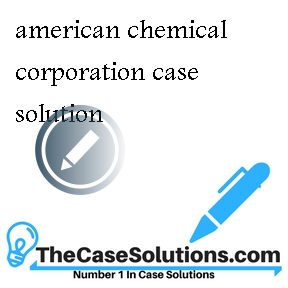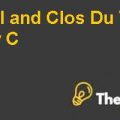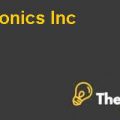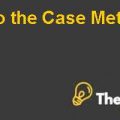American Chemical Corporation
1. INTRODUCTION:
This report analyzes a case where a company named American Chemical Corporation (ACC) is selling its sodium chlorate plant and another company Dixon Corporation (DC) has agreed to purchase the net assets of ACC’s Sodium Chlorate plant in Collinsville for $12 million, subject to approval by its board of director. ACC has also proposed that it would make some changes in the technology, which would apply a permanent laminate (or coating) to the graphite electrodes to reduce power needs by 15% to 20%. This addition of technology would cost about $2.25 million, which amount could be depreciated over a period of 10 years. Therefore, in this report, we analyze the deal under the given scenario, where the NPV of plant needs to be determined. under the results of evaluation and analysis for acquisition of American Chemical Corporation’s Plant.
2. AREAS TO BE ASSESSED:
Following points are addressed in the report:
- Free cash flows from plant, with and without investment in the laminate technology.
- NPV of plant assuming 16% discount rate.
- How attractive is the Collinsville plan for DC based on above quantitative analysis.
- Evaluate the opportunity with reference to the Dixon’s corporate strategy.
- Recommendation based on above qualitative and quantitative analysis.
3. ANALYSIS:
Free cash flows without laminate technology:
Free cash flows (FCF) from the plant are calculated in the excel sheet “ACC” without considering the laminate technology, from plant’s use for 10 years (expected useful life of plant). It is found that FCF (undiscounted) from plant with out laminate technology is $8.6 million after considering the cost of plant’s investment and all FCFs. In calculating, following assumptions are taken as well.
| Assumptions | |
| Discount rate |
16.00% |
| Tax rate based on 1979 tax (Exhibit 7) |
49% |
| Capex is constant from 4th-10th year while Net WC and Op. Profits after taxes are costant from 5th-10th year | |
| From 5th-10th year, Dep. is assumed to be = last year depreciation+ 10% Capex of last year | |
| For NPV, it is assumed that working capital is recovered at end of 10 years life, while assets would be of zero scrap value. | |
The terminal value for plant also undertakes the effect of net working capital recovered at period end and tax benefit on PP&E recovery is also added to these cash flows. All this calculation can be observed in excel sheet “without Laminate”.
Free cash flows with laminate technology:
For the Laminate Technology, only the additional cash flows directly from the technology are calculated which would be compared with the cashflows from unlaminated plant which includes other factors as cost of investment etc. Cash flow from laminate will begin from 1981 as the technology installation is made by end of Dec 1980 and hence cash flows would then begin in 1981. While considering the laminate technology, figures as provided in Exhibit 8 of the case are considered which also suggests that power cost grow 12% p.a. and other costs, as graphite cost and its savings as well, would grow at 8% after 1984. Power Cost Savings would come at a rate of 17.5%. Calculation of free cash flows also incorporate the tax benefits available from the depreciation and zero scrap value of laminate technology investment. The investment of $2.25 in laminate technology have 10 years of useful life, but as technology is used from 1981, it is depreciated over 9 years of plant’s life (depreciation from 1981-1989) and 1 year tax benefit is accrued at sale over zero scrap value. This calculates free cash flows from laminate technology use, which is found to be $15 million ($14.98 million).
NPV of plant assuming 16% discount rate:
NPV of unlaminated plant is calculated at 16% which discounts the free cash flows from plant using this discount rate. The discounted value of plant, with out laminate technology is negative (-2 million) which shows that plant is not attractive without laminate technology. When the additional cash flows directly related to laminate technology are discounted at 16% to give a present value (PV) of free cash flows (FCF) directly relevant to the laminate technology, the PV of free cash flows from laminate technology is found to be approx. $5 million ($4.95 million). Therefore, to arrive at plants net value (NPV), using the NPV of plant without laminate technology and NPV of FCF from laminate technology, we arrived at a 10 years NPV of plant (with laminate technology) to be approx $3 million ($2.9 million). This is shown in the excel file ...
This is just a sample partial case solution. Please place the order on the website to order your own originally done case solution.......................
This is just a sample partial case solution. Please place the order on the website to order your own originally done case solution.
A major manufacturer of chemical deprives plant that gets a small manufacturer of specialty chemicals. Acquisition decision from the perspective of a small producer of specialty chemicals. "Hide
by William E. Fruhan, John P. Goldsberry Source: HBS Premier Case Collection 11 pages. Publication Date: March 1, 1980. Prod. #: 280102-PDF-ENG












